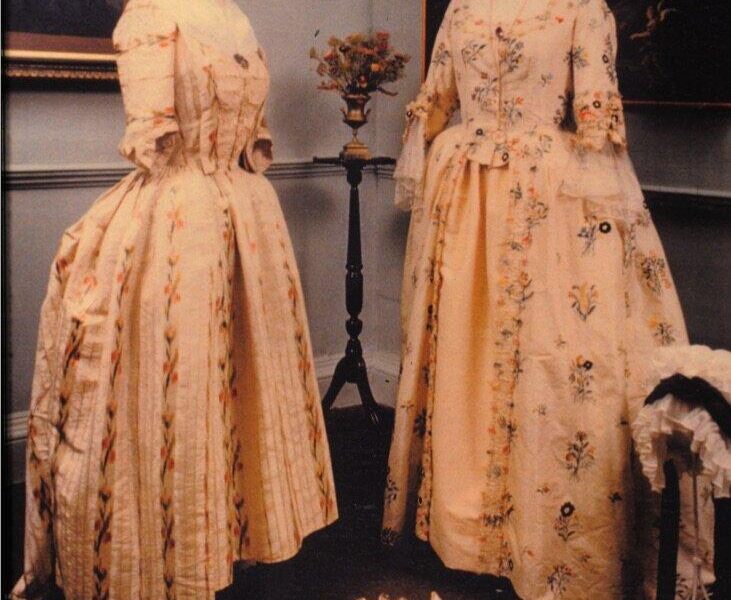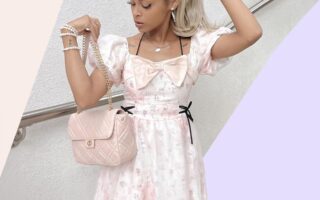Step back in time to the 18th century, a period that brims with innovation and transformation, not just in art and politics but also in the realm of fashion. As Europe transitioned through the Enlightenment and approached the dawn of modernity, clothing became a powerful mode of expression, reflecting societal shifts, class distinctions, and cultural narratives. The flamboyant elegance of this century is characterized by an array of sumptuous fabrics, intricate embellishments, and a distinct wardrobe separation between the nobility and the common folk. From the powdered wigs and corseted gowns of the aristocracy to the simpler, yet no less expressive, attire of the lower classes, 18th century dress serves as a fascinating lens through which we can explore the values, aspirations, and identities of a bygone era. Join us as we unravel the complexities of 18th century fashion, examining its origins, evolution, and the exquisite details that defined a century’s style.
Table of Contents
- Exploring Fabric Choices and Textile Techniques in 18th Century Fashion
- The Role of Fashion in Social Status and Identity During the 1700s
- The Evolution of Silhouettes and Styles: From Rococo to Neoclassicism
- Accessories and Underpinnings: Essential Elements of 18th Century Attire
- Q&A
- Key Takeaways
Exploring Fabric Choices and Textile Techniques in 18th Century Fashion
In the 18th century, fashion was not merely about appearance; it was a reflection of social status and economic power, and this was vividly expressed through fabric choices. The era was marked by a diverse palette of materials, from luxurious silks and brocades to practical wools and linens. Silk, particularly in shades like deep burgundy and royal blue, dominated the upper class wardrobes, often intricately embroidered or patterned. The introduction of chintz, a printed calico fabric, made a statement among the middle class, signifying both style and comfort. Fabric choices were not only dictated by personal taste but also by function and seasonality, as lighter fabrics were preferred in warmer months while heavier textiles were utilized for colder climates.
The techniques used in textile production during this period were equally impressive, showcasing the craftsmanship of the time. Complex processes such as spinning, weaving, and dying allowed for a multitude of designs and textures. Notably, the rise of Jacquard weaving lent itself to intricate patterns and motifs that further enhanced the visual appeal of garments. To illustrate the variety, consider the following table outlining some popular fabrics and their corresponding techniques:
| Fabric | Technique |
|---|---|
| Silk | Sericulture and weaving |
| Brocade | Jacquard weaving |
| Chintz | Block printing |
| Velvet | Cut and uncut pile weaving |
| Wool | Carding and spinning |
This rich interplay of fabric and technique underscored the era’s dynamic fashion landscape, where garments were not just worn but were crafted to tell a story of social identity, innovation, and artistry.
The Role of Fashion in Social Status and Identity During the 1700s
The 1700s were a time when clothing transcended mere functionality, becoming a potent symbol of social status and identity. The upper echelons of society showcased their wealth and influence through extravagant garments adorned with intricate embroidery, luxurious fabrics, and elaborate accessories. The architecture of fashion during this era employed a vernacular that spoke of class divisions; such as the difference between the noblemen’s knee breeches and the common man’s simple trousers. This visual language was reinforced by the legitimacy bestowed by royal endorsement, where fashion choices would often reflect the current monarch’s tastes, shaping societal norms and expectations.
Across Europe, the distinction in dress was particularly pronounced, with regions adopting unique styles that spoke to their cultural heritage, yet remained anchored in the broader narrative of status hierarchy. The adoption of styles like rococo in France or the more austere looks favored in England created a canvas upon which one’s identity could be painted. Public events and gatherings further highlighted these differences, turning fashion into a performative art that communicated power dynamics loud and clear. To illustrate this, consider the following trends in men’s and women’s fashion during the 18th century:
| Men’s Fashion | Women’s Fashion |
|---|---|
| Frock coats with decorative waistcoats | Wide skirts supported by petticoats |
| Knee breeches with silk stockings | Engaging bodices and lace-trimmed sleeves |
| Tricorn hats adorned with feathers | Powdered wigs often exceeding real hair |
In this milieu, the significance of color also played a crucial role; while somber shades marked the garb of the lower classes, the elite campaigned for bright hues that signified availability and yearning for attention. Ultimately, the interplay between fashion, social status, and personal identity during the 1700s paints a vivid portrait of a society in which appearance dictated perception, leaving a lasting imprint on the evolution of Western sartorial norms.
The Evolution of Silhouettes and Styles: From Rococo to Neoclassicism
The transformation of fashion in the 18th century illustrates the vivid interplay between artistic expression and societal mores. During the Rococo period, dresses became extravagantly ornate. Fabrics like silk and brocade adorned with intricate embroidery and lace became the hallmarks of elite fashion. Silhouettes were characterized by elaborate petticoats that widened the hips, as well as dramatic sleeves that often flared at the elbows. Key features included:
- Lavish fabrics: Emphasizing luxury and wealth.
- Curvilinear lines: Creating a sense of movement and playfulness.
- Pastel color palettes: Infusing garments with a light, airy feel.
As the century progressed into the Neoclassical period, a stark transformation emerged reflecting a shift towards simplicity and historicism. Emulating the art and culture of ancient Greece and Rome, dresses took on a more streamlined shape. The waistlines were elevated, and the flowing silhouettes often featured a high empire waist that celebrated the natural body. Core characteristics of this style included:
- Lightweight fabrics: Such as muslin and linen, promoting comfort and ease.
- Minimalist designs: Reflecting a preference for clarity and restraint.
- Classical motifs: Often inspired by ancient sculptures and architecture.
An excellent illustration of this evolution can be found in the following table, highlighting notable fashion elements from both styles:
| Feature | Rococo | Neoclassicism |
|---|---|---|
| Silhouette | Wide and elaborate | Slim and streamlined |
| Fabric | Silk, brocade | Muslin, linen |
| Color Palette | Pastels, vibrant hues | Soft neutrals, earth tones |
Accessories and Underpinnings: Essential Elements of 18th Century Attire
In the world of 18th-century fashion, accessories and underpinnings played a pivotal role in defining one’s social status and personal style. Chemises, stays, and panniers formed the foundation of a woman’s silhouette, ensuring not only modesty but also the extravagant styles prized by the elite. The chemise, usually made of linen, served as a base layer, while stays provided internal support, shaping the torso into the desired hourglass figure. Meanwhile, panniers, or side hoops, expanded the dress’s width, emphasizing the dramatically styled skirts that became emblematic of the period.
Accessories also contributed significantly to the overall ensemble, offering a means through which individuality could be expressed. Essential items included mob caps, gloves, and fan—each not only served practical purposes but also reflected the wearer’s taste. An elegant table highlights some of the key accessories of the time:
| Accessory | Function | Style Note |
|---|---|---|
| Mob Cap | Headwear for modesty | Commonly adorned with lace |
| Gloves | Hand protection & fashion | Length varied by occasion |
| Fan | Cooling & communication | Often elaborately decorated |
From these essentials emerged the complexity of attire that characterized the 18th century, drawing attention not just to the garments themselves but also to the social rituals of dress. Every layer and embellishment told a story of culture, wealth, and the nuances of daily life, elegantly wrapped in the opulence of the time.
Q&A
Q&A: Exploring 18th Century Dress
Q1: What characterized 18th century dress in terms of style and silhouette?
A1: The 18th century was marked by dramatic changes in fashion, influenced by social, political, and cultural shifts. Men’s attire often featured fitted coats with wide lapels, waistcoats, and breeches, while women’s fashion emphasized a full skirt supported by petticoats and the iconic mantua or gown. The silhouette was defined by the use of elaborate fabrics and lavish embellishments, creating an elegant and refined appearance.
Q2: How did socio-economic status influence dress during this period?
A2: Socio-economic status played a crucial role in 18th century dress. The upper classes showcased their wealth through opulent fabrics, intricate embroidery, and lavish accessories, often adopting the latest French styles. In contrast, the lower classes wore simpler clothing made from coarser materials. Sumptuary laws, especially in places like England and France, also dictated what individuals could wear based on their social standing, further emphasizing class distinctions through attire.
Q3: What materials were commonly used in 18th century clothing, and how were they sourced?
A3: Fabrics such as silk, wool, cotton, and linen were prevalent during the 18th century. Silks, often imported from Asia and produced in Europe, were favored by the wealthy for their luster and drape. Wool and linen were more accessible materials for lower and middle-class individuals. The era also saw the rise of printed cotton fabrics, which became popular for everyday wear due to their affordability and vibrant patterns.
Q4: Who were the key influencers of fashion during the 18th century?
A4: Fashion in the 18th century was heavily influenced by royal courts and notable figures, particularly in France. The court of Louis XIV established trends that many sought to emulate, with figures like Madame de Pompadour and Marie Antoinette further shaping fashion through their extravagant tastes. Additionally, the burgeoning middle class and its quest for fashion became significant players in dictating style shifts, as access to various styles expanded in the latter part of the century.
Q5: How did gender roles impact the fashion of the 18th century?
A5: Gender roles were deeply entrenched in the fashion of the 18th century. Men’s clothing was designed for practicality and function, while women’s fashion emphasized beauty and status, often requiring restrictive garments like corsets and crinolines. The expectations of femininity dictated elaborate hairstyles and accessories, showcasing women’s roles as caretakers of the home and society. However, the latter part of the century saw early stirrings of a shift toward more practical clothing for both genders as Enlightenment ideas began to question traditional roles.
Q6: Were there any notable regional variations in 18th century dress?
A6: Indeed, regional variations were pronounced in 18th century dress, reflecting local customs, climates, and available materials. For instance, Spain is known for its vibrant colors and ornate designs, while England’s styles featured more subdued palettes and a focus on tailoring. In colonial America, settlers often adapted European fashions to suit their needs, leading to hybrid styles that incorporated practicality, such as the ‘American Country’ aesthetic that emerged in rural areas.
Q7: What technological advancements influenced 18th century fashion?
A7: The 18th century was a period of innovation that significantly influenced fashion. The introduction of the spinning jenny and power loom increased the availability of textiles, making certain fabrics more accessible. Additionally, advancements in dyeing techniques led to a wider array of colors and patterns. The rise of fashion magazines in the late century also revolutionized how styles were disseminated, allowing trends to spread more rapidly across Europe and beyond.
Q8: How has 18th century dress influenced modern fashion?
A8: The influences of 18th century dress are still evident in modern fashion, particularly in the realm of haute couture. Elements such as corsetry, elaborate embroidery, and silhouette shaping can be seen in contemporary eveningwear and bridal fashion. Additionally, the romanticized vision of the 18th century continues to inspire costume design in theater and film, illustrating the enduring legacy of this dynamic period in fashion history.
Key Takeaways
As we conclude our journey through the intricate fabrics and striking silhouettes of 18th century dress, we are reminded that clothing is much more than mere fabric and thread; it is a narrative woven through time. Each stitch echoes the social dynamics, artistic movements, and personal expressions of an era that continues to inspire modern fashion. From the opulent gowns adorned with lace to the tailored coats that defined elegance in male attire, the garments of the 1700s tell stories of status, identity, and creativity.
The 18th century was a transformative period, reflecting the tensions between tradition and innovation, beauty and utility. Its influence can still be seen in contemporary designs, reminding us that fashion is both a cycle and a canvas, continuously evolving yet rooted in history.
As we close the chapter on this illustrious period, let us carry forward the appreciation for the artistry and craftsmanship that defined the 18th century. In a world that often races ahead, may we take a moment to admire the fabric of our past, for it is in understanding our history that we can truly embrace the future of fashion.



